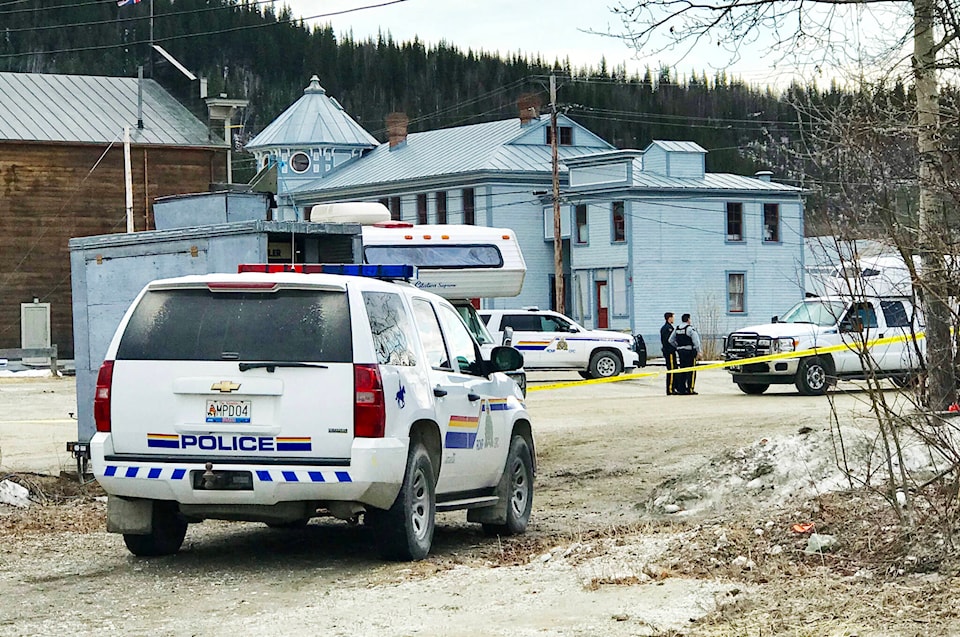On Sept. 10, the Yukon Bureau of Statistics released data on police-reported crime in the territory.The five main categories of crime reported are:
- violent criminal code violations, which includes homicide, sexual assault, and robberies;
- property crime;
- other criminal code violations, which includes weapons violations, child pornography, uttering threats;
- criminal code traffic violations, which includes impaired operation of motorized vehicles, dangerous operation, and driving while prohibited; and
- federal statute violations, which includes all types of drug violations (possession and trafficking) as well as the Firearms Act and the Quarantine Act.
The report is rich in detail. It includes percentage comparisons (per 100,000 population) with other jurisdictions and 10 years of actual incident numbers in Yukon by type of violation and, at the back of the report, by community. All reporting is subject to annual variations due to the small numbers of incidents. Over the time period covered in the report (from 2011 to 2020), the Yukon’s population increased by approximately 7,700 people, or by 22 per cent.
Violent Criminal Code Violations
There was a total of 20 homicides in the Yukon in the 10 years covered, but eight of them took place in 2017. The average might be two per year, but none of the years reported two homicides. No homicides occurred in 2020, but there were three instances of attempted murder.
There were 1,285 instances of assault which accounted for 60 per cent of all violent criminal code violations. Collectively, uttering threats, harassing communications and criminal harassment constituted 28 per cent, and all levels of sexual assaults accounted for nearly seven per cent of violent criminal code violations in 2020.
Property Crimes
This category, although high compared to other jurisdictions, seems relatively stable over the 10-year period, with recent 2020 decreases in theft and break and entering. In the same year, fraud accounted for seven per cent of all property crimes, having increased in 2020 by 20 per cent compared to 2019. But over the 10-year period, incidents of fraud increased a dramatic 275 per cent compared to 2011.
Other Criminal Code Violations
The Yukon’s proportions of incidents in this category have been the highest in the country in each of the last 10 years, with only the recent exceptions of the last three. Within the category, YBS notes a significant proportion of disturbing the peace violations at 64.5 per cent and administration of justice violations at 27 per cent. Weapons offenses have increased, while unsafe storage of firearms remains steady.
The number of actual instances of possession, accessing, making, or distribution of child pornography has increased dramatically in the last two years (though there were small changes in data reporting). In the Yukon in 2018 there were 6 incidents of possessing and making child pornography, in 2018 there were 17, and in 2020 there were 15.
Firearms and incidents with other offensive weapons doubled between 2011 and 2020.
Criminal code traffic violations
In 2020, Yukon’s proportion of criminal code traffic violations at eight per cent was the third-highest in Canada following PEI and Quebec. Ninety per cent of incidents in this category were due to impaired driving, while 10.5 per cent were for dangerous operation, evading police or driving while prohibited.
There were 53 fewer incidents of criminal traffic violations in 2020 than in 2019, but this is was still a 125 per cent increase over 2011. Of the 785 impaired driving incidents in 2020, 85 per cent were due to operating while impaired on alcohol; seven per cent were impaired on drugs alone; and five per cent were impaired by alcohol and drugs.
Federal Statues Violations
This category includes drug violations, possession, production, and trafficking. The legalization of marijuana dropped possession violations of cannabis to zero. There were 100 violations between 2011 to 2016. There were nine violations under the Cannabis Act in 2020.
Cocaine trafficking increased from 30 in 2011 to 185 in 2020, and heroin trafficking violations increased from 0 to 10 over the same period of time.
Other federal statutes violations (Firearms Act, Customs Actor other federal statutes) remained relatively constant.
Yukon Rural RCMP Detachments
The report contains individual data from 13 communities with RCMP detachments by type of violation and by year. Small numbers with high variabilities make generalizations difficult. However, the data does make clear that the proportion of actual incidents is less concentrated in Whitehorse than would be expected with Whitehorse home to approximately 80 per cent of the Yukon’s population.
Overall, 68.8 per cent of all violations took place in Whitehorse. The figure is similar for property crime violations, other criminal code violations (weapons, harassment, threats), and federal statutes for drug violations. By comparison, only 63 per cent of violent criminal code violations in Yukon took place in Whitehorse.
The overall changes between 2019 and 2020 by detachment areas, saw a decrease of 89 incidents, with the largest percentage decrease occurring in Haines Junction.
The report can be found online.
Contact Lawrie Crawford at lawrie.crawford@yukon-news.com
